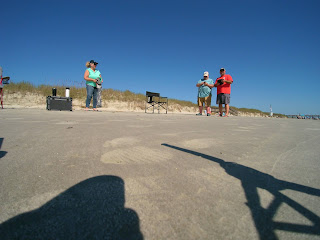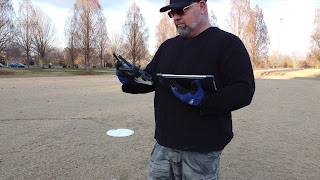Helping Customers Succeed Through Good Pre-Flight Planning - 004
My favorite playtime activity was play with blocks, building great structures, in my humble opinion, was the best. On that day I had a plan in my head to build a twisting and turning road complete with a cool bridge. The teacher paired us up into two person groups and paired Timmy and myself up, which was good because he was a friend. I went to Timmy with full exuberance trying to explain “the plan” but stumbled upon my words frustrating myself and proclaimed to just show him what I was wanting to do. Fortunately Timmy was a good hearted willing sport and played along, seeming to be happy as a clam playing with the blocks. He acted as an assistant of sorts to a mad scientist handing me the blocks as I described the next one needed for the project.
While Timmy took it all in stride I’m sure it wasn’t as fun as it could have been if I had been better in describing the idea in my head. Cutting my kindergarten self some slack, adults can have the same issue putting the ideas in their head into a verbal form, especially if you are dealing with folks that are highly creative. When dealing with customers drone pilots can experience this same type of issue, an exuberant customer that has a myriad of ideas, especially those new to filming and new to using drones. A customer having the vision of what they want but not fully understanding the capabilities and limitations of a drone can impact the efficiency of the shoot. Frustrating is the word that comes to mind when you arrive on a film site and things are disorganized. Having said that I’m still a believer that spontaneity should be embraced but in the framework of a structured plan.
I ran into this type of situation on a mission helping a fellow with footage for a video contest he was entering. The initial emails should have tipped me off as the script was changing by the day, which I chocked up to being new to leading video projects. We arrived at the park for the drone segment and immediately noticed there were a lot of people taking advantage of the park on this nice weekend. When I mentioned this he said he was hoping for a lot of people because it would add to the video. My gut reaction at that point was that I should have done a better job at pre-planning the mission and will pass those learning lessons to you.
The first thing that can be done to help a customer is to check out the location online well ahead of time, called a site visit. While there’s the inherent shortcomings of location evaluation online via Low Altitude Authorization and Notification Capability (LAANC), road maps and aeronautical charts. Unless you are using one of the all in one programs, LAANC is a good option to save from going back and forth between road and aeronautical charts. Location evals will help qualify the airspace for your customer, you might be surprised how unaware most people are about locations and their proximity to air traffic controlled airspace, like B, C, and D. In addition there may be military/national security airspace, called Special Use Airspace (SUA) such as, Prohibited, Restricted, Alert and Military Operations Areas (MOA’s), not that all are deal breakers flying wise.
The second thing you can do is to send an information sheet to customers of location details, do’s and don’ts, and common shots. Info sheets cover basic information like time(s), address of the location(s), with North direction depicted, and a basic map with drawings of shot areas (online or hand drawn for those non-computer types). The Info sheet is a great time to cover safety considerations, best practices and capabilities of the drone (and pilot for that matter). To avoid disappointment and confrontation, outline safety items such as, not flying over people (less the better), flying near airports, airspace limitations, flight areas (including sterile flight area), and obstacle considerations.
While I understand there are times when a pre-mission site visit isn’t possible or practical, the boots on the ground approach is the best way to scope out shot areas, issues and efficient shot sequences, called a shot list, before the day of the mission. Use this as an opportunity to speak with your client about his/her vision for the shoot and an open discussion on the practical nature of what is being asked without the distraction of being on the day of the mission.
One client that wanted me to follow horse and rider up and down hills at eye level with the drone. I explained that the horse could be followed (side shot) but that the drone would have to be a few feet higher to prevent us from possibly colliding in-case I zigged and/or the horse zagged by accident. He wasn’t happy not getting exactly what he asked for but worked out. Interestingly, the Assistant Director had discussed the shot with me previously and it was supposed to be a much easier sequence with a crane type and overhead shot. I suppose the Director and Assistant Director either didn’t communicate with each other or had different visions for the scene, go figure.
Thirdly, you can help those new to film-work with drones by mapping out a shot list for the day and considering how it integrates with the script. Perhaps there are issues with the sun and general location, efficiency, timing or sequences that would go better together. Sure, you might have to deal with these situations with kid gloves on occasion but can be warranted.
If I had the film contest project to do over again I would have asked and anticipated crowds on the day of the shoot. Flight over people is a big no-no for us, not to mention the potential issue of filming people, which fortunately we were in a public park and couldn’t make out the faces of individual people. However, you never know when someone might pursue legal action even if they don’t have a foot to stand on.
The lesson for me was to be proactive in creating the structure you need for an efficient shoot. Consider putting together your own customer information form to ensure you are covering all of the bases. Customer personalities, communication and working style will be different, so you may have to use the site visit to help the customer realize what is possible, and not possible shot wise. No matter how cool the proposed shot is if it’s unsafe, stick to your guns if pressed.
TC Freeman is the Chief Instructor for the RemotePilotAssociation.com (RPA) and has a passion for helping recreational and commercial drone pilots learn to fly and earn FAA commercial Remote drone Pilot certification through live, hybrid or self-study courses.
Join us for our annual JUNE-JULY New Membership “OPEN HOUSE,” a FREE-no obligation bi-weekly webinar where we discuss drone business, certification and re-currency. Email us to RSVP.
#drone, #dronephotography, #dji



Comments
Post a Comment